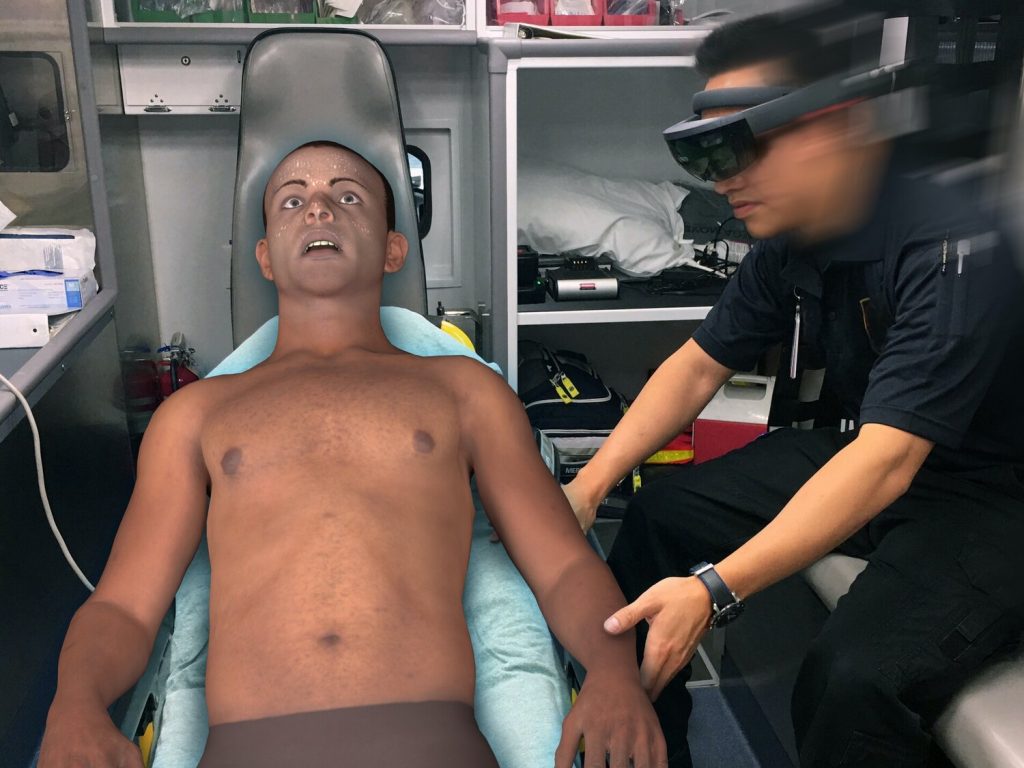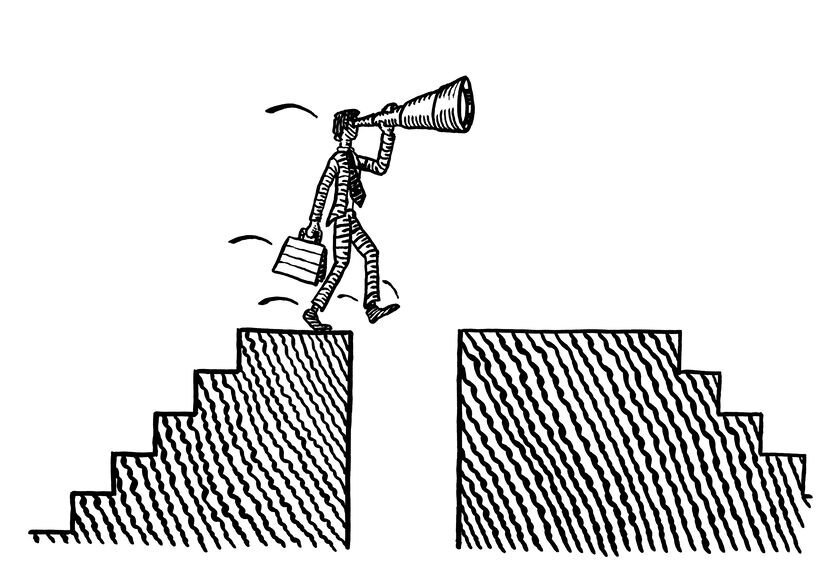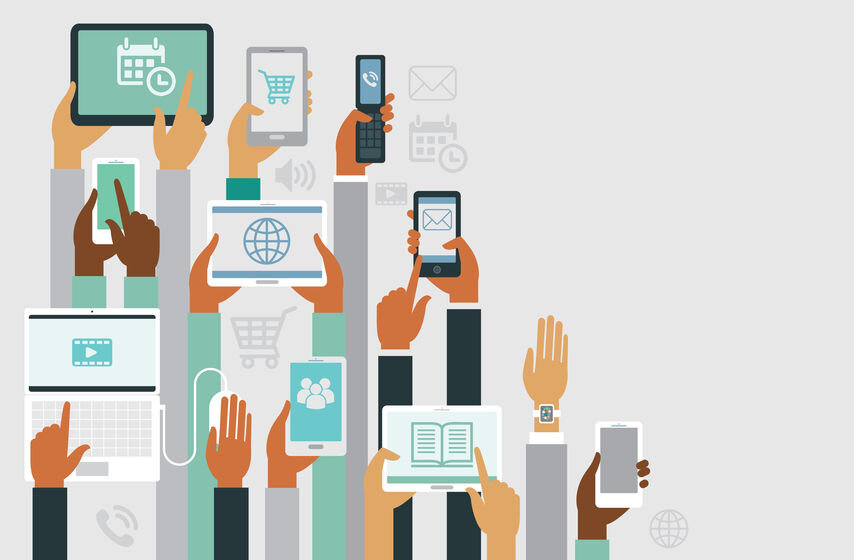Pearls and Pitfalls of 3 Technology Trends Shaping Learning in the Medical Workplace

INTRODUCTION
Life-long learning has become essential to healthcare. As Harvard Medical School reported, the half-life of medical knowledge was 18 to 24 months in 2017 and headed to 73 days by 2021.
As relevant medical knowledge rapidly decays, technology inevitably plays a larger role. Three technologies have emerged as dominant influences. Mobile device mediated applications or mobile learning, simulation, and social media.
Technology Pearls
M-LEARNING
Mobile learning (m-learning) uses technology in smartphones, tablets, laptops, etc., to deliver education. Specialized apps on smartphones, and other mobile devices, provide information about medication guides, medical calculators, and healthcare textbooks to quickly access information. These apps are helpful to physicians and other healthcare professionals for quick answers to questions and may shape patient care. Faced with at least thirteen thousand diagnoses, six thousand drugs, and four thousand procedures, the modern clinician’s ability to rapidly access the best available evidence has become a must.
Healthcare professional trainees can download apps related to clinical practice and help with certain clinical work aspects. Some believe that m-learning positively affects the trainees’ ability to work efficiently by enhancing their drive to research medical findings quickly. Overall, using m-learning device is preferred over internet-based learning.

PerSim, an augmented-reality patient assessment simulation system designed for ultra-portability.
SIMULATION
Simulation-based learning effectively advances procedural skills, team training, and contextual decision-making. Specifically, in-situ simulation or simulation conducted in care areas with patients allows for the transfer of learning into clinical practice. As human patient simulation becomes increasingly portable, easy to use, and clinically intuitive, the role of in-situ simulation will become more commonplace.
SOCIAL MEDIA
Social media and its many facets, blogs, wikis, social networking, YouTube, WebMD, etc., create a communal and interactive environment among those in the medical practice. The impact of “Free Open Access Meducation” (FOAM) and social media has transformed medicine’s learning landscape. Sites such as REBEL EM provide high-quality, peer-reviewed analysis of the latest research and an evidence-based perspective to commonly encountered clinical questions.
“The impact of ‘Free Open Access Meducation’ (FOAM) and social media has transformed medicine’s learning landscape. Sites such as REBEL EM provide high-quality, peer-reviewed analysis of the latest research and an evidence-based perspective to commonly encountered clinical questions. ”
Social media has unleashed an advancement to how we can obtain knowledge and share knowledge with others. It enables learners to provide content and partake in communities online. Social networking has linked students from across the globe to share and learn from one another and post various job opportunities.
Using these technologies in providing concrete experience, allowing for both reflection and abstract conceptualization supports Kolb’s learning cycle and Eraut’s informal learning intentions. Albeit, conflict, and disagreements about the use of technology have created some controversy.

Technology Pitfalls
The use of technology alters interactions with team members and patients. Some of these tools are powerful, and with power comes responsibility. Understanding the potential downside is critical.
M-LEARNING
Mobile learning is overall beneficial but still presents some pitfalls.
Many apps are not adequately assessed for accuracy, and without appropriate oversight, can be a hindrance rather than a benefit. Getting guidance from respected peers or institutional leadership as to reliable apps to use could avoid unnecessary confusion.
Smartphone app overuse can interfere with proper bedside manner and create distractions or interruptions in focus. Minimal use of mobile devices, in general, is advised. When staff must use medical apps in a patient’s presence, explain the reasons beforehand verbally and keep its use brief. Doing so will help minimize misperceptions.

SOCIAL MEDIA
Just as the age-old drug digoxin, social media has a narrow therapeutic window. The risk of transgressing professional norms or violating patient privacy is relatively high. Many of the standards for using social media in a non-professional setting do not translate well into the healthcare workplace. A lack of understanding of how to responsibly use social in the medical workplace has ruined many professionals’ and trainees’ careers. Obtaining a firm grasp of each organization’s social media policy and federal patient privacy protections has become an essential aspect of the medical workplace.
SIMULATION
In-situ simulation is ideal for various reasons. It makes way for practicing clinical skills even for high-risk, low-frequency events. Although many sim tools are becoming more user-friendly and portable , most are not flexible enough for ad-hoc training with simulation. Therefore high levels of planning and coordination to accomplish are required.
Creating safe learning spaces is a significant challenge with in-situ simulation. Keeping both patients and participants safe is essential. Safety not only includes physical security but psychological safety as well. Use of in-situ simulation performed without the proper preparation and tools can intimidate rather than engage participants.
“Creating safe learning spaces is a significant challenge with in-situ simulation. Keeping both patients and participants safe is essential. ”
SUMMARY
As the need to address rapidly decaying medical knowledge and improve patient safety grows, the field of healthcare will experience innovative uses of technology. Being aware of the pearls and pitfalls of emerging technology, such as those reviewed, can help seasoned healthcare professionals and trainees alike with learning in the medical workplace.
Resources
Bullock A, Webb K. Postgrad Med J 2015;91:646–650.
About the Writers
Paula Pinto is a writer and editor but above all a Christian and mama.
Hector Caraballo, MD is just another ER doc and Chief Medical Officer of MedCognition
MedCognition welcomes the opportunity to explore innovation in healthcare, including learning in the medical workplace. Our mission is to help healthcare professionals save more lives. In this pursuit, we are rethinking medical simulation and created PerSim, the holographic patient assessment simulation system that is clinically intuitive, ultra-portable, and easy to use.HEALTH TECHFEBRUARY 23, 2021



